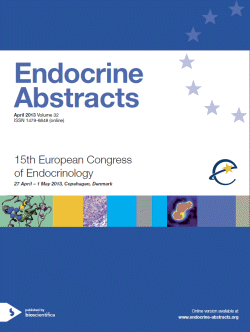Symposia
Novel technologies and inspiring ideas: From basic endocrine research to clinical practice (European Young Endocrine Scientists (EYES) Symposium)
ea0032s26.1 | Novel technologies and inspiring ideas: From basic endocrine research to clinical practice (European Young Endocrine Scientists (EYES) Symposium) | ECE2013
Making a functional thyroid in a dish
Antonica Francesco , Kasprzyk Dominika Figini , Opitz Robert , Iacovino Michelina , Liao Xiao-Hui , Dumitrescu Alexandra Mihaela , Refetoff Samuel , Peremans Kathelijne , Manto Mario , Kyba Michael , Costagliola Sabine
ea0032s26.2 | Novel technologies and inspiring ideas: From basic endocrine research to clinical practice (European Young Endocrine Scientists (EYES) Symposium) | ECE2013




